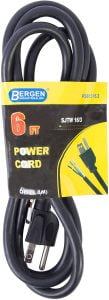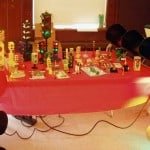How do I make my traffic light work like it did on the road?
Before I talk about how to make your traffic light work, I’m starting this with a disclaimer: If you don’t have a basic understanding of electricity or you’re the least bit uncomfortable about working with electricity, PLEASE ask a trained electrician to set this up for you. I’m not a licensed electrician, but I have a good understanding and a healthy respect for electricity. You can cause serious damage to yourself or your surroundings if you screw this up. Use this as a guide. It is YOUR responsibility to wire it up correctly or find someone who knows what they’re doing to do it for you. Now, with that, here we go!
A lot of guys like to have big, heavy things hanging in their man caves, garages, barns, sheds, and bedrooms (OK, maybe not a bedroom, especially if they’re married) and the traffic light seems to be a popular item. The allure of something hanging in your home that is mostly only found outside, above a road is pretty cool. They’re great conversation pieces. Who wouldn’t love to have one? So you’ve hit ebay, Craigslist, or a garage sale and managed to score yourself your very own traffic light. Great! Now what? How do you make it light up?
Light ’em ALL up!
There are generally two relatively easy ways to hook up your traffic light. One way is cheaper than the other, but less fulfilling. Hard-core signal collectors may have an actual controller cabinet to make their signals run through a sequence, or even running many signals. But, I’m going to talk about how to wire up your basic, three-section signal in an easy way that requires only basic electrical knowledge. Again, read my disclaimer.
The first way is simply connecting the lights to power. Cords can also be found at home improvement stores and look like extension cords with one end with bare leads. You could also use an old extension cord. A standard two-prong cord is fine for plastic signals. However, if you’re wiring up a metal traffic light, I would recommend a grounded power cord.
The bare leads would connect to the lights’ leads (many times they’re connected via contacts on the terminal block inside the signal) and all would light up when plugged in. Furthermore, you could use blinking bulbs or flasher modules that get inserted into the sockets to make the lights randomly flash.
But what if you want it to work like it did on the street?
There are a few manufacturers of small controller boards that simply fit into a section of the signal and run it like it used to. Galak Electronics, Lights-to-Go, and IotMug all make well-regarded controllers. I’ve used them all and can recommend any of them.
The power cord would connect to the board’s power inputs and the lights connect to their respective places on the board. Some controllers will have timing adjustments for the sequence and flashing modes. Many will also have additional features for turn arrows, multiple signals, or pedestrian signals.
Some manufacturers will even be able to customize it for you in a way that would include an overlap (multiple sections come on together), a black-out period (no lights on, like in the old days on a red-green signal), or European sequences (red-yellow before green). Very cool!
Again, PLEASE use caution when making your traffic light work. Having it lit up and even working like it did on the street raises the bar in your man-cave décor. If you use my Amazon Affiliate link, I’ll get a few pennies if you buy something from them.







